
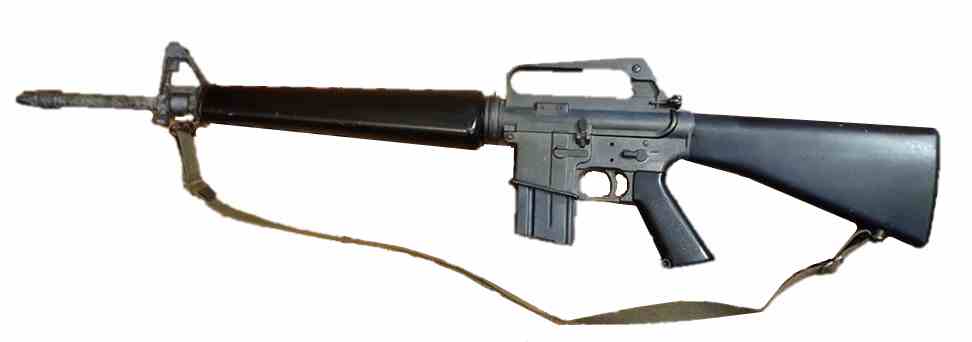
The M16 rifle and its variants became the most common US rifle in Vietnam, replacing the M14 rifle in the mid 1960s. Equipped with 20-round magazines, chambered in the new .223 caliber, and having select-fire capabilities, descendants of this rifle continue in service of the US and many other countries around the world today. This is a faithful blank-firing replica made in the 1970s for movie use.
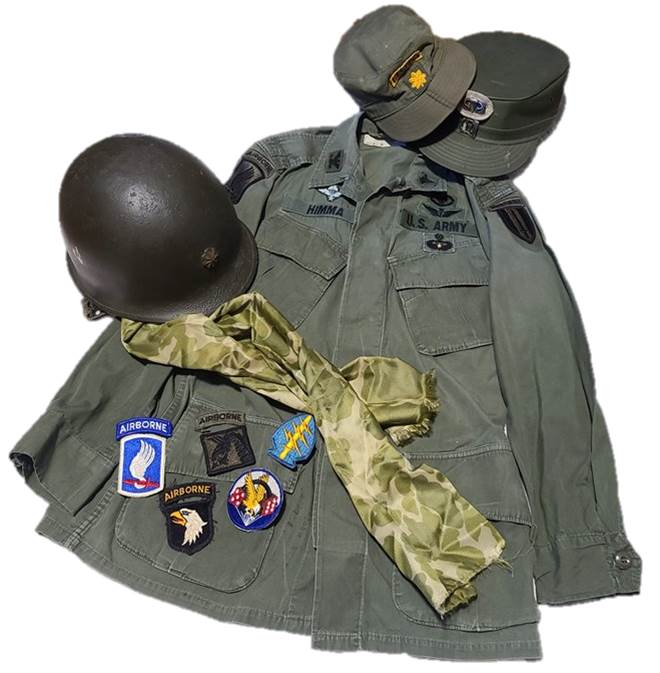
Group to a Special Forces surgeon that served from the 1950s-1970s in various airborne units.

M1 helmet as used in Vietnam. This was the same design as WWII but with updated chinstraps and liner suspension. The exterior is covered with a reversible camouflage "Mitchell" cover and secured with an elastic band.
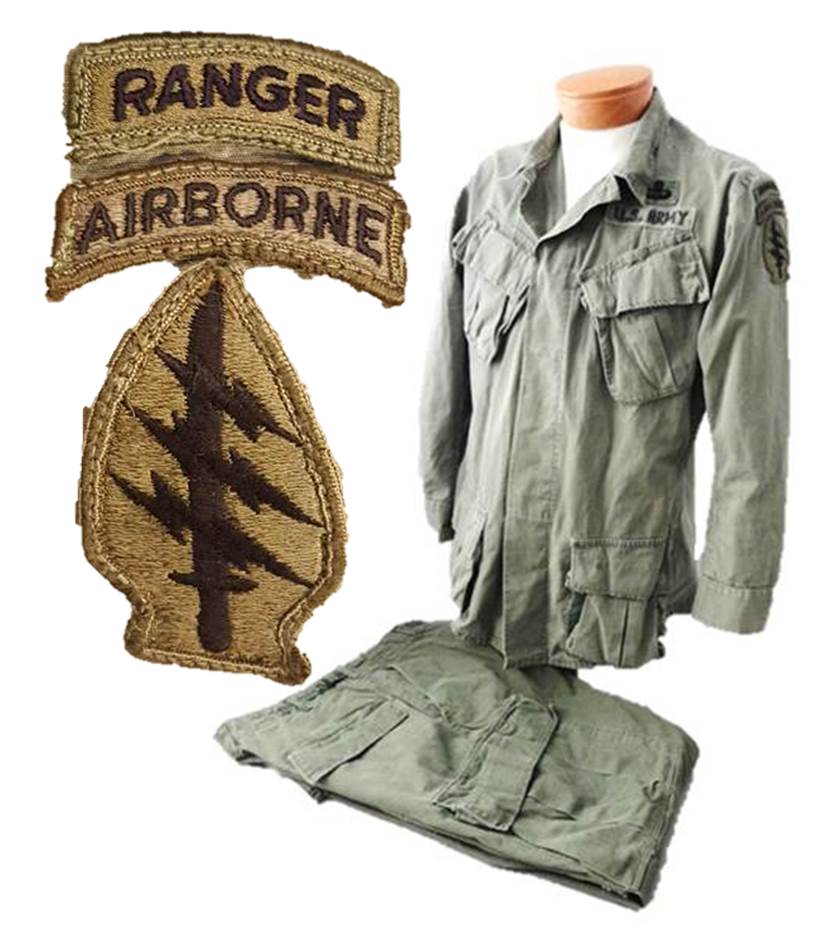
Displayed here is a "Jungle Jacket" made of cotton ripstop and accompanying cargo pants developed for the tropical climate of Southeast Asia. This example is patched to a veteran of the Special Forces.
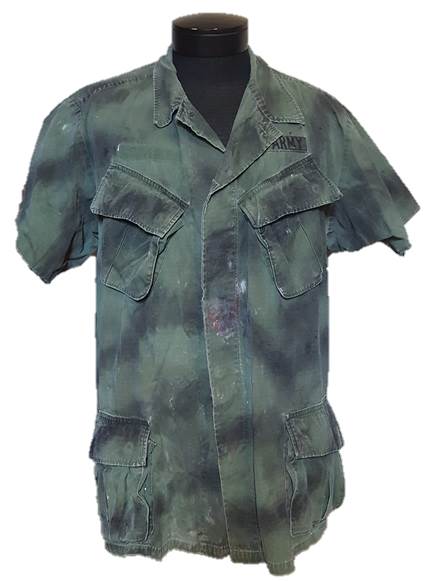
A Vietnam-era Special Forces jungle jacket with shortened sleeves and painted camouflage striping. Outlines where patches once were show SF shoulder insignia and a pocket patch were once on this uniform.
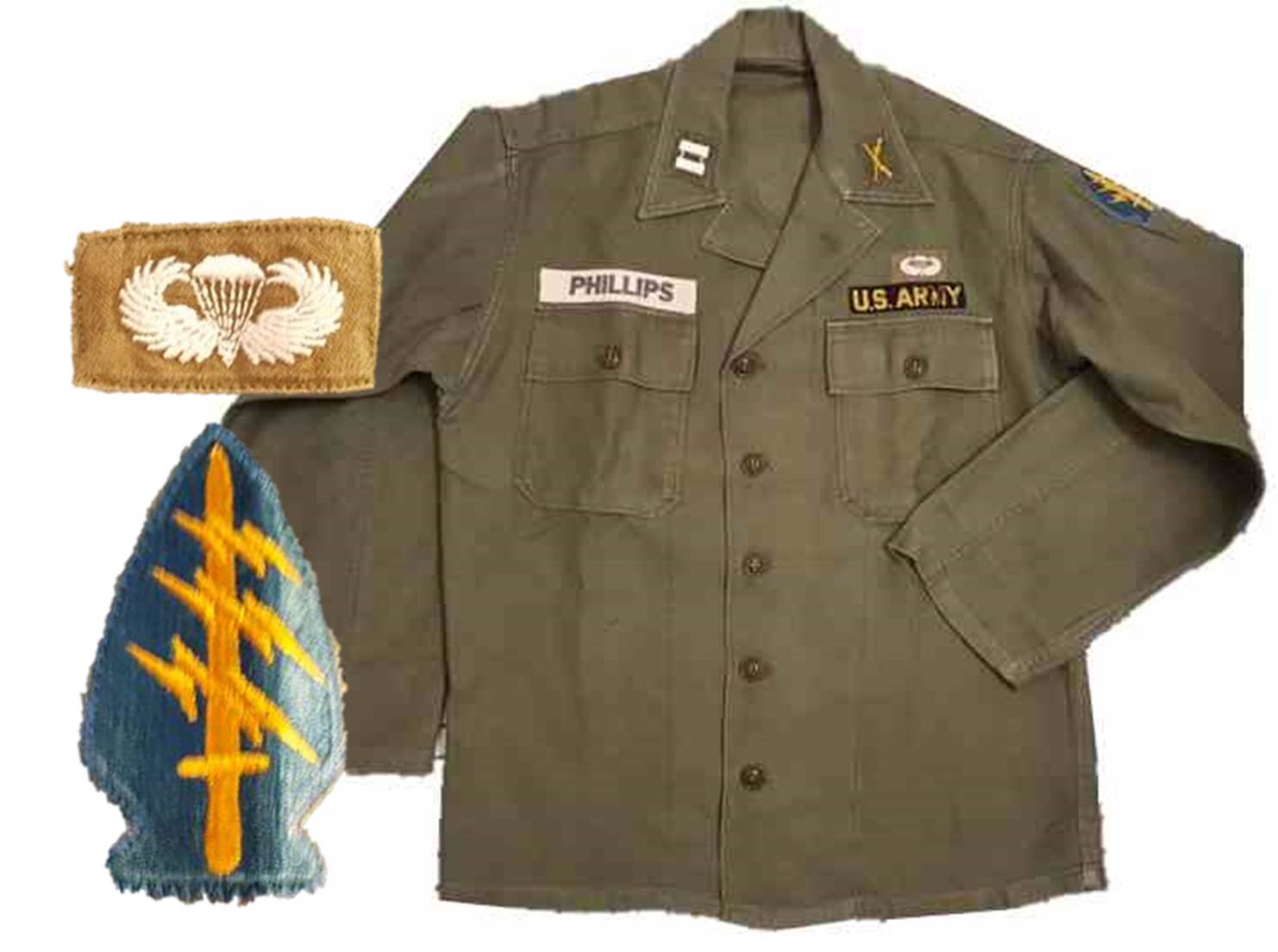
OG-107 cotton utility shirt, which became standard in the early 1950s. This patched example dates to the early 1950s to the first years of the Special Forces, which was founded in 1952. This example was a SF patch worn before the adoption of the "Airborne" tab. It has the 1950s name and Army tapes, airborne qualification badge, and captain's bars.
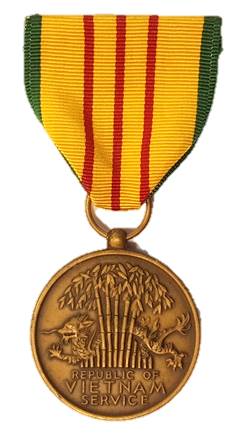
The Vietnam Service Medal was awarded from 1965 to 1975 for those who served in Vietnam, Thailand, Laos, and Cambodia.

The National Defense Service Medal was established in 1953 and is the country's oldest service medal still used. It is awarded to those who serve during a of conflict.
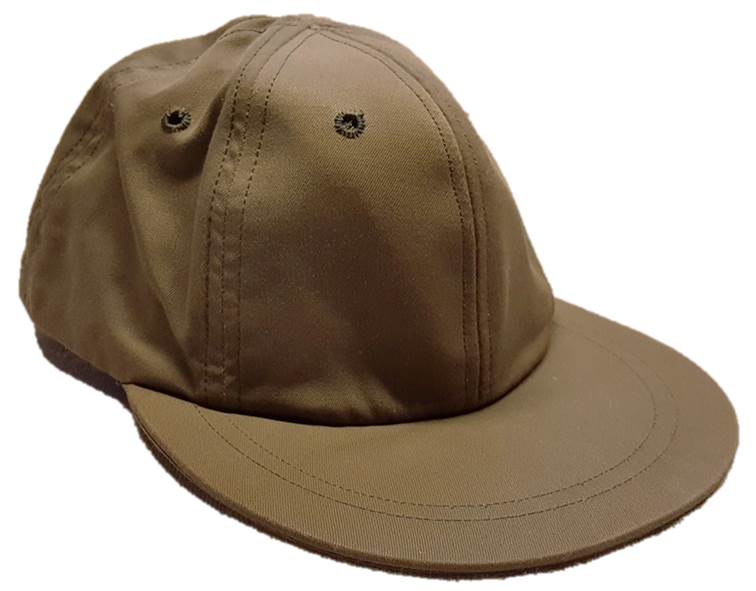
Field cap, adopted in 1962 by the Army. It was phased out in 1985.
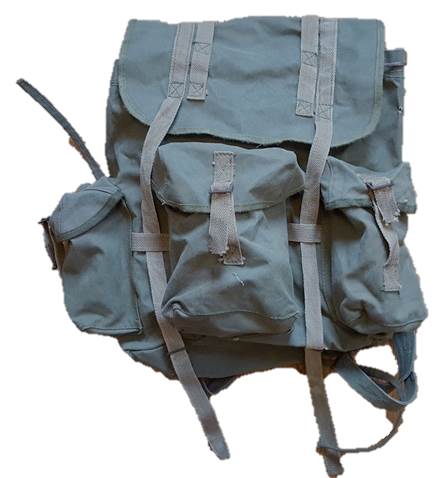
A rucksack produced for Special Forces and Recon teams. It is a sterile copy of a North Vietnamese model produced on Okinawa.
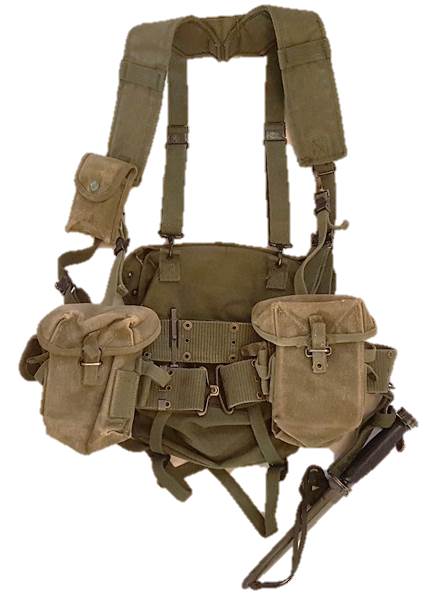
A setup of M1956 web gear, as used in the Vietnam era. This includes ammunition pouches on a web belt, as well as a "butt pack" attached to the rear. The set is supported with a set of suspenders with a compass/first aid pouch and bayonet attached. Rather than using eyelets and hooks for attachment of all items like in WWII, clips were utilized.

Bayonet for the M16 rifle.
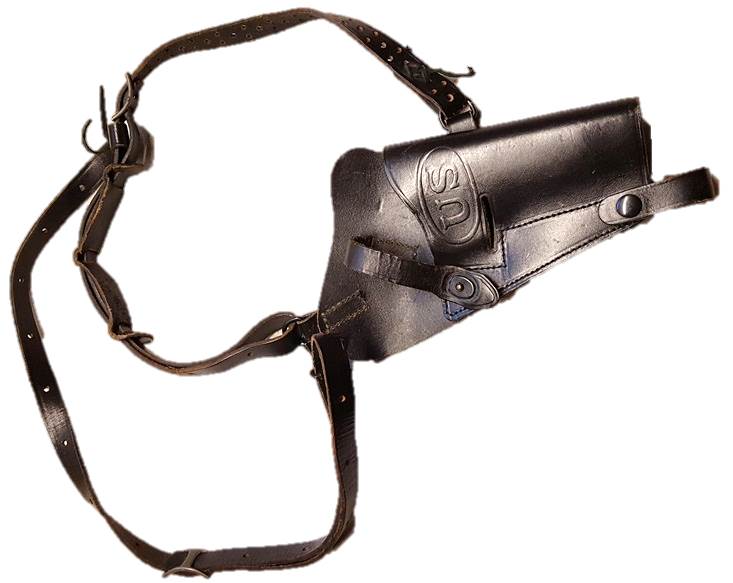
Shoulder holster for the 1911 .45 pistol.
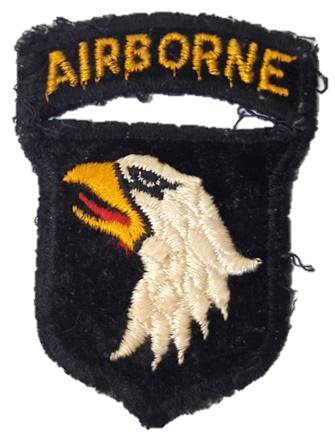
1960s-era 101st Airborne patch with a velvet background.
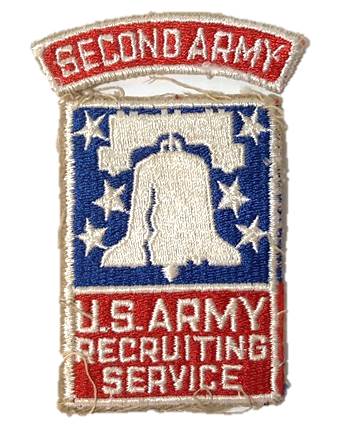
A recruiting service patch from the early 1960s.
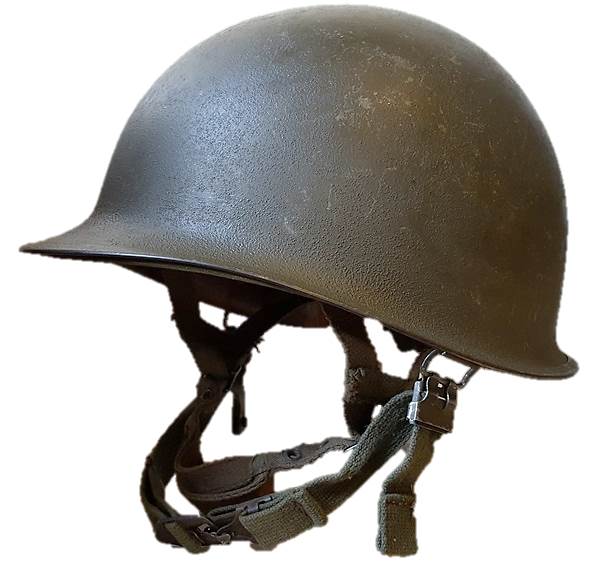
M1C Parachutist helmet and liner. This example was produced in the early 1960s and worn by a veteran of the Special Forces. This differs from the standard M1 helmet by extra yokes for securing the helmet to the head, and snaps on the chinstrap to attach the liner to the shell.
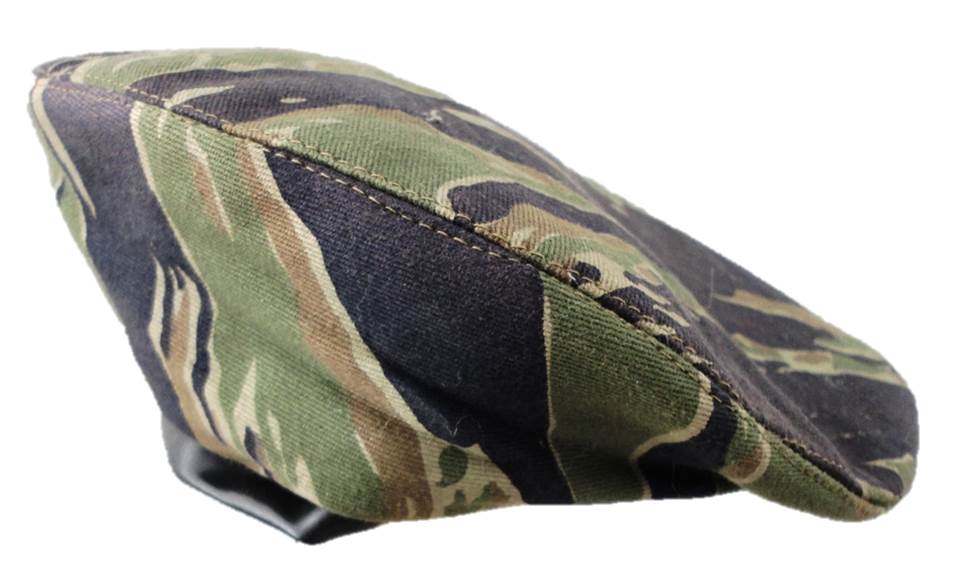
Vietnamese-made "Tiger Stripe" beret. These were worn by ARVN forces and by US Special Forces/advisers.
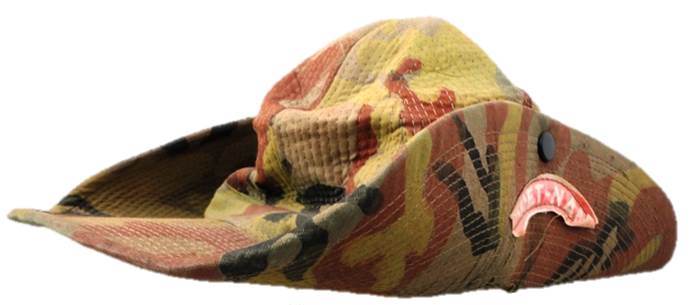
Locally-made stitched "cowboy hat" with Vietnam patch. These were popular non-regulation headgear and souvenirs of servicemen in-country.
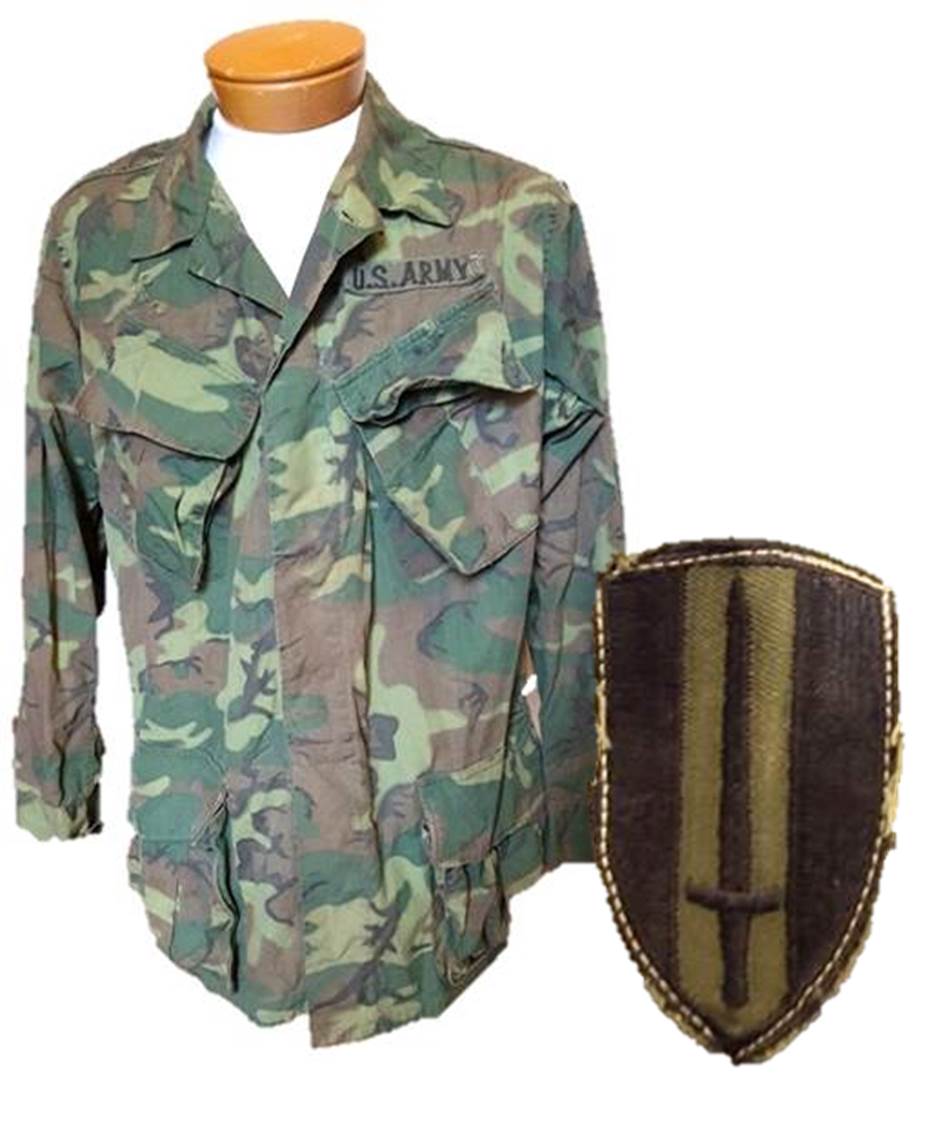
Vietnam-era ERDL camouflage jungle jacket in sateen, not the more commonly encountered poplin fabric. This was the first camouflage uniform adopted and would later become standard in the 1970s.
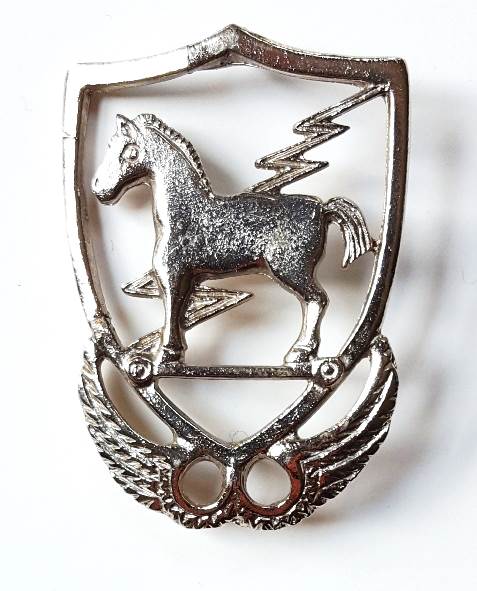
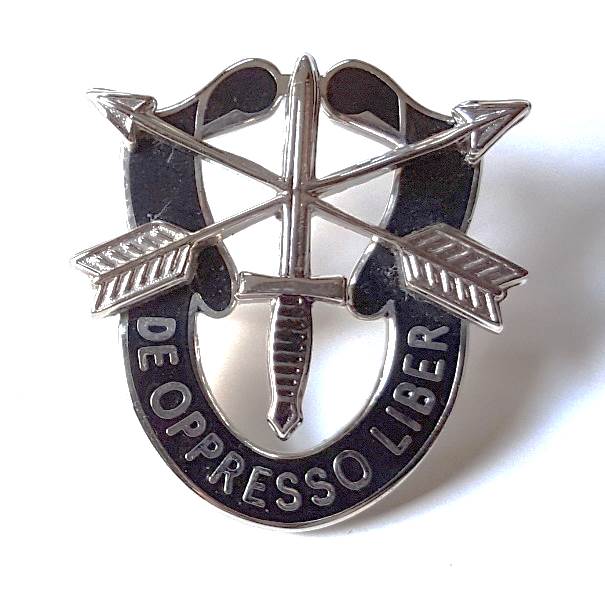
Early (left) and Vietnam-era (right) Special Forces insignia.
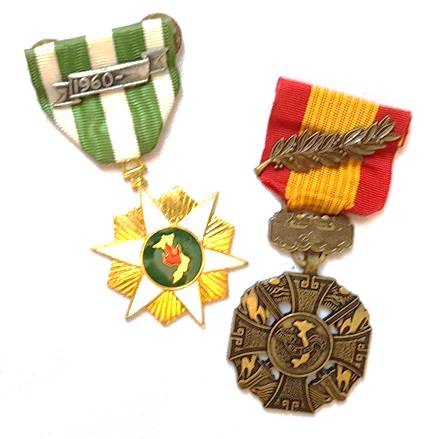
Vietnamese medals awarded to US servicemen. On the left is the Republic of Vietnam Campaign Medal and on the right is the Republic of Vietnam Gallantry Cross with Palm.
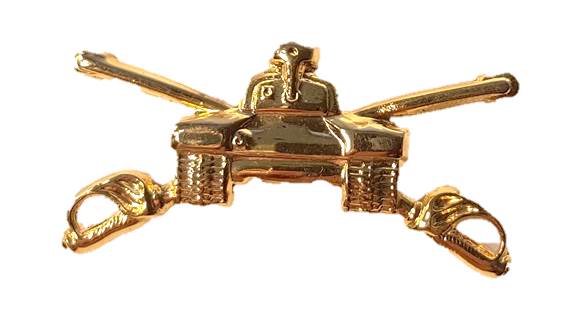
Insignia of the Armored Cavalry, which was established in 1950. It represents the merging of traditional cavalry (sabers) and tanks (M26 tank) into a branch designed for speed,reconnaissance and surveillance.
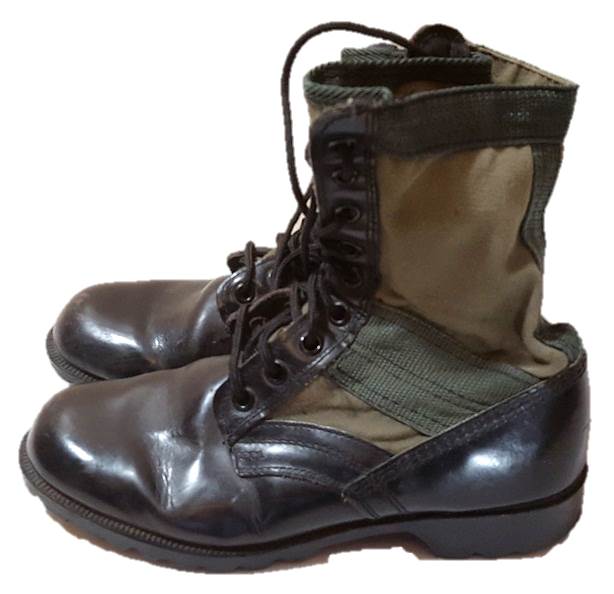
Jungle boots developed for the tropical climate of Vietnam. The leather construction of the upper was replaced with canvas, and soles were later reinforced for protection against spikes.
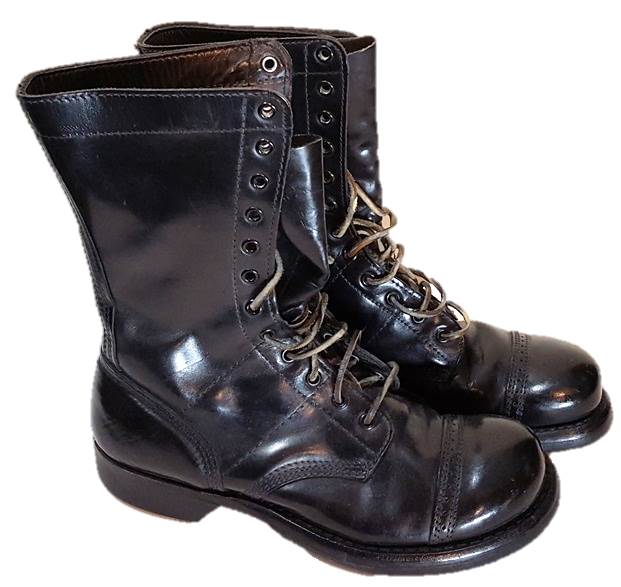
Corcoran jump boots in a pattern very similar to that of WWII, still of leather construction, continued to be used in non-tropical climates and by airborne troops.
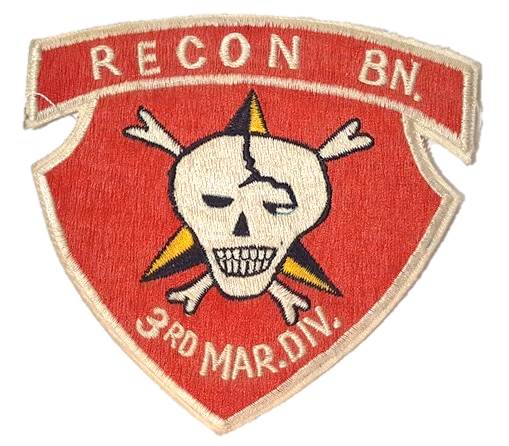
Souvenir patch of the 3rd Marine Recon Battalion. The 3rd was among the first ground units to land in Vietnam in 1965.
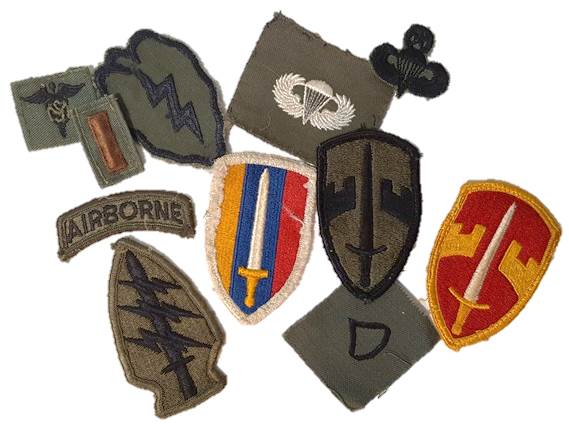
A selection of Vietnam-era insignia, including shoulder patches and rank/qualification insignia. Full-color patches were supplemented with "subdued" colored insignia to match field uniforms in the mid 1960s.
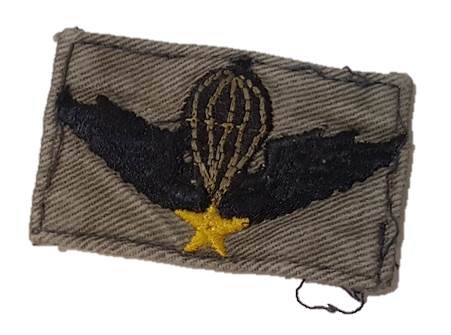
South Vietnamese jump wings, a qualification sometimes attained by US advisers and those training with the military of South Vietnam.

Chinese-made SKS chest rig. These were exported worldwide in the 1960s and thereafter.
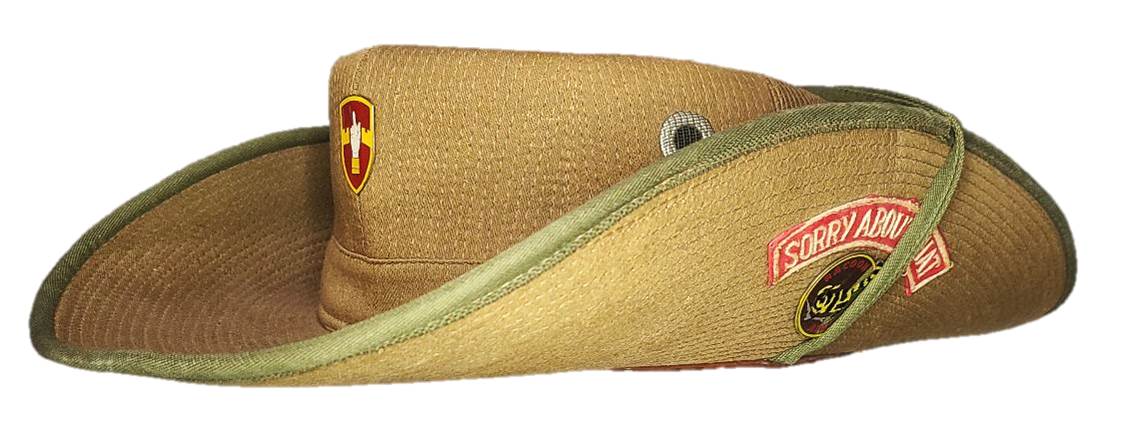
Bush hat with various insignia. This was brought back by an Air Forcepilot of F-101 and F-4 aircraft.
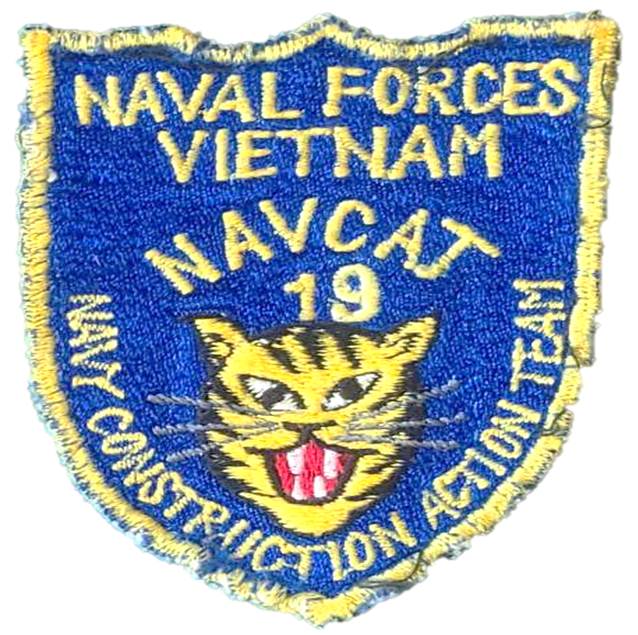
Naval Construction patch
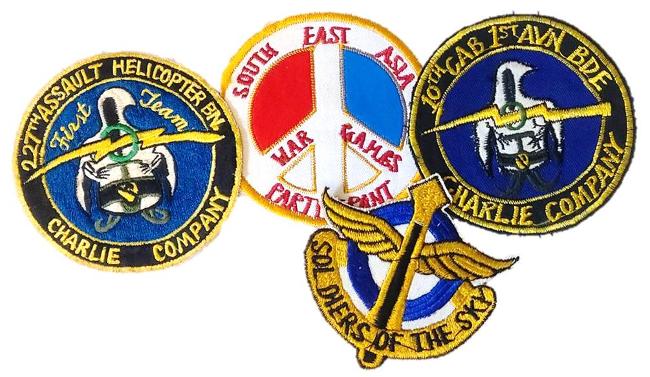
Grouping of patches found together, representing the 10th Combat Aviation Battalion of the 1st Aviation Brigade and 227th Assault Helicopter Battalion.